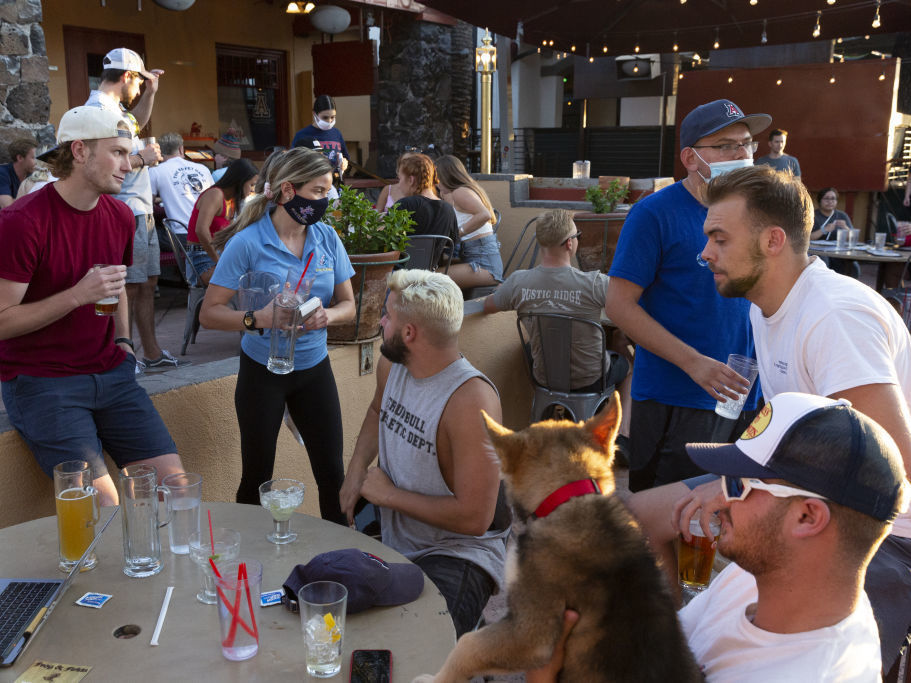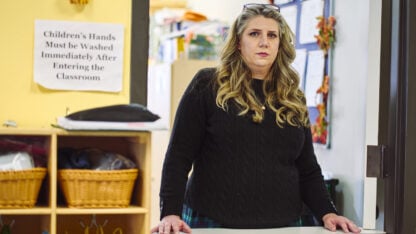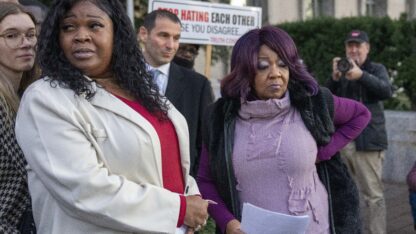As much of the country presses forward with reopening, a growing number of cities and states are finding that the coronavirus outbreak now has a foothold in a younger slice of the population, with people in their 20s and 30s accounting for a larger share of new coronavirus infections.
The demographic shift has emerged in regions with different populations and political approaches to the pandemic – from Washington state and California to Florida and Texas. North Carolina, South Carolina, Arizona, Wisconsin and Colorado also all report clusters that have a larger proportion of young adults than they had previously seen.
Public health experts said the trend could be explained in several ways. More people are getting coronavirus tests. The criteria for who gets tested as well as the capacity to test them have expanded since the beginning of the pandemic. Early on, generally only people with symptoms or who were seriously ill could get tested at all.
But some public health experts said the increase is because some younger adults may perceive they are less at risk than their parents or grandparents and are more likely to venture back into society as it reopens — that could mean going to restaurants or social gatherings or returning to the workplace.
In Washington state, an outbreak in a nursing facility signaled the pandemic’s arrival in the United States. Now, nearly half of new coronavirus cases in the Seattle area are showing up in those in their 20s and 30s, according to a recent analysis of state data.
“This creates a reservoir of disease moving around in the population, simmering, if you will,” said Judith Malmgren, an epidemiologist at the University of Washington and author of the study that analyzed Washington’s March and April age data. “This can spike to uncontrollable levels in more vulnerable adults very quickly.”
What first caught Malmgren’s attention was that hospitalizations in Washington were falling, but new cases did not mirror that decrease. Even as more older adults were tested, the rate of infections in younger adults continued to climb.
“The key to controlling this virus so it’s not running rampant is to look at the people who are most active and have most contact with the public,” she said.
While there is always a risk of becoming seriously ill, the chance of someone under 40 ending up in the hospital is quite low. In fact, the rate of hospitalization for people who test positive for the coronavirus in their 20s is under 4%, according to the Centers for Disease Control and Prevention. For those over 60, the rates go way up, to more than 20%. The fatality rate for people in their 20s and 30s without underlying health conditions is about 0.1%.
Adjusting the public health response
For public health workers, an acceleration of infections in young adults requires a different approach than early in the pandemic, when the strategy was largely to stall the spread of the virus in older populations and those most vulnerable to the disease.
Malmgren said the public health response should now be tailored to a younger demographic. “They are not reading print media. You need to be on social media. You need to use short sentences. You need to use very direct messaging,” she said.
Ideally, testing would also be available where young adults already gather, not only at doctors’ offices or drive-through testing sites, she said.
The story is similar in California. People under 35 now make up about 44% of new infections in that state, compared with 29% last month, according to an analysis of state data by infectious disease epidemiologist George Lemp.
The uptick in new cases is evident in both children and teenagers as well as adults.
“It’s very striking that there’s been such a strong shift,” said Lemp, the former director of the University of California’s HIV/AIDS Research Program. “Some of that could be due to the testing itself and targeting of younger people. And it’s also likely due to the shift in behavior as younger people start to move away from social distancing and consistent mask use.”
State and local health departments report the age breakdown of coronavirus infections and COVID-19 cases in a variety of ways. Many don’t release information about age with other daily metrics such as hospitalizations. Beginning in August, all laboratories testing for the coronavirus will be required to report standardized information such as age and race for each new case to the federal government.
“If you see these types of trends occurring in a state as large as California, it’s probably a very strong harbinger that this is actually happening nationally, too,” Lemp said.
Calling out millennials
Increasingly, state and local leaders are pointing out the trend.
Texas Gov. Greg Abbott recently called out young adults for a spike in new cases, citing reports of packed bars and people failing to do social distancing.
In Brownsville, Texas, Dr. Joseph McCormick, an epidemiologist with the UT Health School of Public Health, said new infections in people under 35 have shot up dramatically, accounting for more than half of the recent cases in his region.
“We are seeing a resurgence of transmission, and it’s being driven by younger people,” he said. He said that older people still make up the bulk of hospitalizations.
Crowded beaches and bars at the nearby resort town is “pretty clear evidence” of why younger adults are the ones getting sick in his community, McCormick said. “This is relatively new, and I think it’s because that segment of the population decided, ‘OK, I’m free,’ whereas the older group is thinking, ‘Woah, wait a minute, I’m still in jeopardy.’ ”
Officials in one Texas county even link the spike in cases to young people floating in the river.
At the beginning of June, about 15% of Georgia’s news cases were 18- to 29-year-olds. A few weeks later, that number jumped to 27%.
“When I go out, I call out young people who don’t have a mask and ask them why. Do they mind if their grandpa or their grandmother gets ill?” McCormick said.
Florida Gov. Ron DeSantis has also pointed out that the outbreak is skewing younger. People under 37 make up about half of that state’s newer cases, he said.
In an online video address, St. Petersburg Mayor Rick Kriseman scolded millennials (the generation that is now roughly ages 23 to late 30s) for their role in spreading the virus, saying, “It is time that your generation started taking this more seriously.”
Ken Welch, a county commissioner in Pinellas County (home of St. Petersburg), is working on a public awareness campaign directed at young adults since not everyone follows the county’s YouTube channel, he admitted.
“One idea is to reach out to local sports figures like the Tampa Bay Buccaneers, the Lightning, the Rays, and have them talk about why it’s important to wear a mask and why it’s cool,” Welch said. “I’d love to see Tom Brady in a mask.”
While some states have anecdotally seen young adults abandoning pandemic precautions, a recent survey of people in New York and Los Angeles found people in their 20s and 30s were broadly supportive of social distancing and other measures such as wearing face masks.
In mid-March, White House coronavirus coordinator Dr. Deborah Birx called millennials the “core group that will stop the virus.” Dr. Anthony Fauci even appeared on a popular podcast to appeal to the younger generation for help. “You’re not a passive person in this,” Fauci said. “You are an important part of the active plan to contain this epidemic.”
To reach the young, recruit trendsetters
Dr. Wafaa El-Sadr, a professor at Columbia University’s Mailman School of Public Health, said it’s not yet clear to what extent young people are driving community transmission of the virus, but it’s a key metric that public health agencies should be following.
“It’s a lost opportunity,” she said. “I think young people can potentially have a very, very valuable role if we can harness their energy and attention.”
El-Sadr said the best strategy is to enlist “trusted spokespeople” who can help mobilize a younger population through things such as social media rather than relying on the same messaging that’s been coming from public health officials for months.
“How do we find those individuals that young people today want to emulate? The trendsetters that they will listen to and follow,” she said.
What’s increasingly clear is that young adults can be key to curbing community transmission of the virus.
A study from Japan concluded that those in their 20s and 30s played a significant role in spreading the virus in non-health care settings, including restaurants, bars, music-related events and workplaces.
“We need to change our whole thinking about COVID-19 during this stage of the pandemic,” said Dr. Thomas Tsai, a professor at the Harvard T.H. Chan School of Public Health. “It’s difficult to contain the virus physically because you have younger individuals, who may be pre-symptomatic or mildly symptomatic, who are going about their normal lives and reengaging with society.”
Instead of returning to a lockdown, Tsai said the key is to make tests widely available, use contact tracing to find clusters of the disease and push people to wear face coverings.
“Arguably, this is even more important now because we’re no longer motivated to follow public health guidance by images of people lining up outside the hospitals in New York,” he said. “It needs to be a more personal approach.”
Copyright 2020 NPR. To see more, visit https://www.npr.org.
9(MDAxODM0MDY4MDEyMTY4NDA3MzI3YjkzMw004))

9(MDAxODM0MDY4MDEyMTY4NDA3MzI3YjkzMw004))







